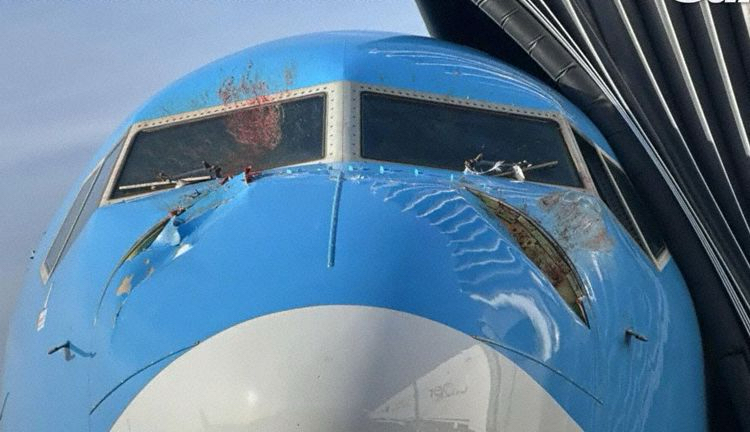Overview
• Operator: TUI Airways
• Aircraft Model: Boeing 737-8 MAX
• Registration: G-TUMP
• Flight Number: BY-432
• Route: London Gatwick (UK) → Sal (Cape Verde)
• Date: 5 February 2025
• Occupants: Passengers and crew unspecified
• Nature of Incident: Bird strike during initial climb
Incident Summary
TUI Airways flight BY-432, operated by a Boeing 737-8 MAX (G-TUMP), was departing from London Gatwick Airport’s runway 26L en route to Sal, Cape Verde when it encountered a serious bird strike at approximately 1,000 feet AGL.
The aircraft struck two swans, causing impacts to the aircraft’s nose and windshield. The crew immediately stopped the climb at FL080 and entered a holding pattern to assess the situation. After confirming that a return to Gatwick was necessary, the aircraft safely landed back on runway 26L approximately 50 minutes after departure.
The aircraft sustained visible damage to the nose and windshield, leading to an extended grounding for inspection and repairs.
Sequence of Events
Departure & Bird Strike
• Aircraft took off from Gatwick’s runway 26L.
• While climbing through 1,000 feet, two large swans collided with the aircraft.
• The nose and windshield sustained damage, prompting immediate assessment.
Decision to Return & Landing
• The crew stopped climb at FL080, remaining in a holding pattern.
• After evaluating the situation, they declared an emergency return to Gatwick.
• The aircraft landed safely on runway 26L about 50 minutes after departure.
Replacement Flight
• A replacement Boeing 737-8 MAX (G-TUMX) was dispatched to operate BY-432, departing with a delay of approximately 3 hours.
Aircraft Status
• The affected aircraft, G-TUMP, remains grounded at Gatwick as of 7 February 2025, approximately 54 hours after landing back.
Analysis & Safety Considerations
1. Aircraft Damage
• Swans are significantly larger than most birds involved in strikes, with high potential for structural damage.
• Impact on nose cone and windshield raises concerns over radome integrity and cockpit visibility.
2. Bird Strike Risk at Gatwick
• London Gatwick’s proximity to wetlands and open water bodies increases the risk of large bird strikes.
• Swans, given their size and weight (~10–15 kg each), pose a serious hazard to aircraft during takeoff and landing.
3. Crew Response & Decision Making
• The crew acted swiftly and professionally, maintaining safe altitude before returning to Gatwick.
• The decision to hold at FL080 rather than immediately descending ensured a controlled return.
Safety Recommendations
✅ Enhanced Wildlife Management at Gatwick:
• Strengthening bird deterrent measures around high-risk areas.
• Improved radar-based avian detection systems.
✅ Aircraft Structural Assessments Post-Bird Strike:
• Detailed inspections of the radome, windshield, and pitot/static systems.
• Verification of avionics and structural integrity following large bird impact.
✅ Operational Adjustments for High-Risk Bird Strike Zones:
• Possible seasonal departure restrictions or procedural changes for aircraft operating in known bird activity regions.
Disclaimer
This report is based on available information as of 7 February 2025. While every effort has been made to ensure accuracy, the completeness of the details cannot be guaranteed. If you are the rightful owner of any referenced materials and wish them removed, please email takedown@cockpitking.com.
